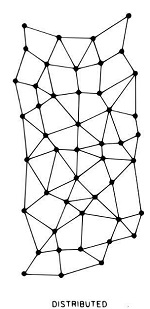Bitcoin continues to make news and inroads into the world of finance. Two of the basic technologies that drive Bitcoin include blockchain and peer to peer computing. These two concepts are relatively understandable. Blockchain uses a distributed ledger, which is essentially a list that is shared across many computers (peer to peer). Because many computers contain a time-stamped replica of the data, it is very difficult, and expensive to hack or change the data in a fraudulent way – and its encrypted.
These concepts are moving into other areas such as smart contracts. However, these contracts are not documents as that term is generally understood. The smart contract is essentially a perfectly known set of conditions and data, that when met, results in a payment or action. The contract is essentially data points; house address, meter number and usage, bank account or Bitcoin account, electricity rate, dates. All immutable data that can be kept in a ledger.
As an example of a smart contract, the distributed ledger could record exactly how much electricity your house is using and it can be scripted to automatically send the electric utility money based on the set rates and dates. However, this is not much different than the current situation of a smart electric meter and autopay. The smart contract method may never involve a bank or fiat currency as we know it. It involves bitcoin or “ether”, the digital currency of Ethereum, a smart contract platform.
The concept of smart contracts can strike fear into lawyers and document management specialists because on the surface it sounds like an end to documents, digital or paper. But the reality is that the world is not comprised of a perfect set of conditions that can be scripted and that is why contracts and lawyers exist now and will for a long time. Maybe smart transaction is a better description and digital signatures should be associated with smart contracts.
A clue to the potential adoption time frame of smart contracts would be digital signatures. Digital signatures have been around since approximately 2003 and are still used predominantly in applications such as vendor contracts, apartment and car rentals because the contracts are standardized. Digital signatures still affix to a digital document and have a secure private ledger to ensure authenticity. More efficient than paper and easy to do.
These new technologies that are based on blockchain and peer to peer have the potential to radically change some back office parts of the current financial infrastructure, but not necessarily the way business gets done. So for the time being, we need to focus on how to efficiently create, store, protect and share our documents, with digital signatures or not, to keep business running smoothly.
Since 1996 Millennia Group, LLC has been providing workflow and document management solutions. www.mgdocs.com, info@mgdocs.com, (630) 279-0577

